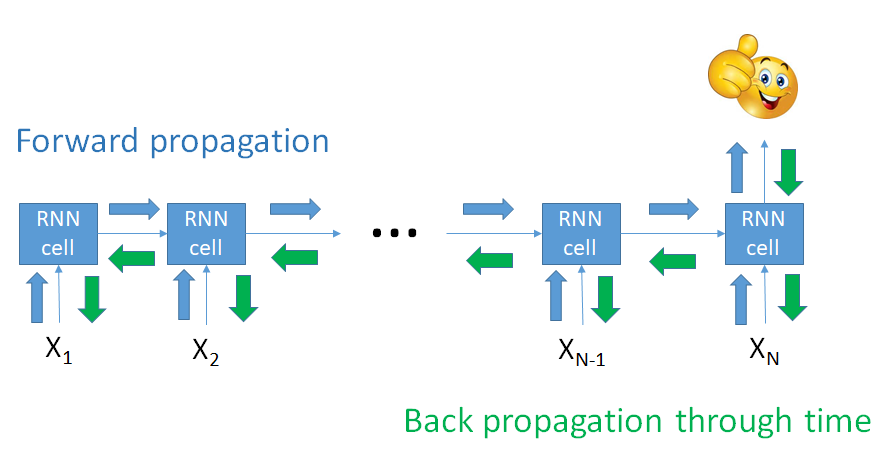Vanishing and exploding gradients
Recurrent Neural Networks (RNNs) for Language Modeling with Keras

David Cecchini
Data Scientist
Training RNN models


Example: $$a_2 = f(W_a, a_1, x_2)$$
$$= f(W_a, f(W_a, a_0, x_1), x_2)$$

Remember that:
$$ a_T = f(W_a, a_{T-1}, x_T) $$
$a_T$ also depends on $a_{T-1}$ which depends on $a_{T-2}$ and $W_a$, and so on !
BPTT continuation
Computing derivatives leads to
$$ \frac{\partial a_t}{\partial W_a} = (W_a)^{t-1}g(X) $$
$(W_a)^{t-1}$ can converge to 0
or diverge to $+\infty$!
Solutions to the gradient problems
Some solutions are known:
Exploding gradients
- Gradient clipping / scaling
Vanishing gradients
- Better initialize the matrix W
- Use regularization
- Use ReLU instead of tanh / sigmoid / softmax
- Use LSTM or GRU cells!
Let's practice!
Recurrent Neural Networks (RNNs) for Language Modeling with Keras

